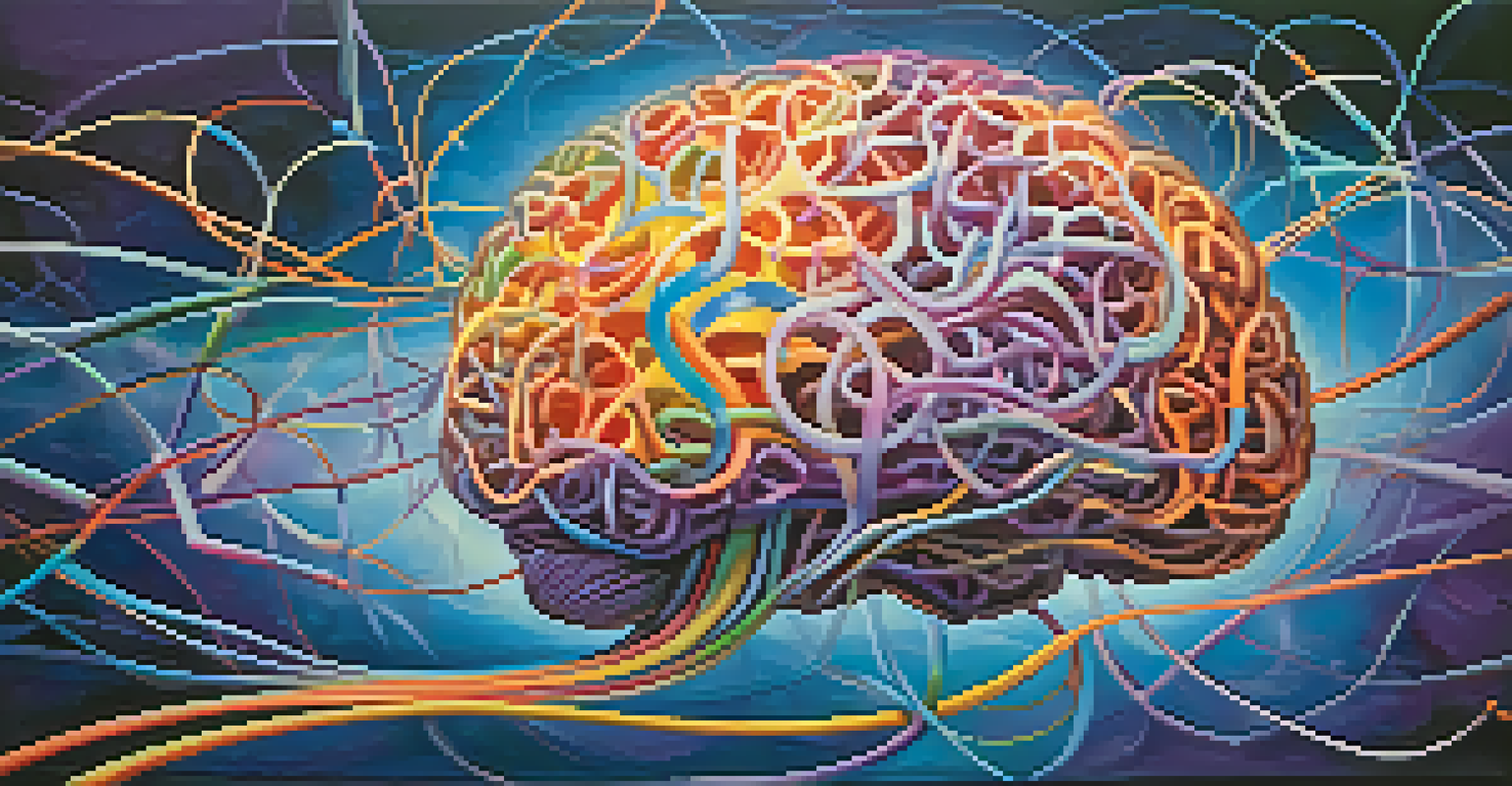Entheogens in Meditation: Enhancing Cognitive Flexibility

Understanding Entheogens: The Basics
Entheogens are substances that can induce altered states of consciousness, often used in spiritual contexts. Common examples include psilocybin mushrooms, ayahuasca, and peyote. These substances have been utilized for centuries by various cultures to deepen spiritual practices and enhance self-awareness.
The mind is everything. What you think you become.
The term 'entheogen' comes from Greek, meaning 'generating the divine within.' This highlights their role in facilitating profound experiences that can lead to personal insights and emotional breakthroughs. While many people associate these substances with recreational use, their potential in meditation and cognitive enhancement is gaining recognition.
As we explore the intersection of entheogens and meditation, it's essential to understand how they can impact our cognitive flexibility—our ability to adapt our thinking and approach to new situations. This adaptability is crucial for personal growth and effective problem-solving.
Cognitive Flexibility: What Is It?
Cognitive flexibility refers to the mental ability to switch between thinking about different concepts or to think about multiple concepts simultaneously. It’s like being able to change lanes while driving without losing sight of your destination. This skill is critical for adapting to new information and making effective decisions.

In meditation, cognitive flexibility allows practitioners to let go of rigid thought patterns, enabling a more expansive state of mind. This openness can lead to enhanced creativity and better emotional regulation, making it easier to navigate life's challenges. Imagine being in a tricky situation and instead of feeling stuck, you effortlessly find multiple solutions.
Entheogens and Spiritual Growth
Entheogens, like psilocybin and ayahuasca, have been used for centuries to enhance self-awareness and facilitate spiritual experiences.
By fostering cognitive flexibility, meditation can help individuals develop resilience and adaptability, essential traits in today’s fast-paced world. When combined with entheogens, this practice may take on even greater depth, opening pathways to new perspectives and insights.
How Entheogens Affect the Brain
Research shows that entheogens can significantly alter brain activity. For instance, substances like psilocybin can promote neural connectivity, allowing different areas of the brain to communicate more effectively. This increased connectivity is thought to be linked to the feelings of unity and interconnectedness often reported during entheogenic experiences.
The only journey is the one within.
One fascinating aspect of entheogens is their ability to temporarily dampen the activity of the default mode network (DMN). The DMN is associated with self-referential thoughts and mind-wandering, which can sometimes lead to anxiety and rumination. By quieting this network, entheogens may help practitioners achieve a more present and mindful state during meditation.
As a result, the combination of entheogens and meditation can create a unique environment for exploring cognitive flexibility. This synergy may help individuals break free from limiting beliefs and embrace new ways of thinking.
The Role of Meditation in Enhancing Experiences
Meditation itself is a powerful tool for cultivating mindfulness and self-awareness. When combined with entheogens, the effects can be amplified, creating a rich tapestry of insights and revelations. Think of meditation as a gentle guide that helps navigate the often turbulent waters of an altered state of consciousness.
Practicing meditation before, during, or after taking entheogens can set the stage for a more profound experience. Techniques such as breath awareness or loving-kindness meditation can anchor the user, making it easier to explore the depths of their consciousness while feeling safe and grounded.
Cognitive Flexibility in Meditation
Cognitive flexibility, crucial for adapting to new information, is enhanced through meditation, allowing for greater creativity and emotional regulation.
Moreover, the meditative state can enhance the cognitive benefits of entheogens, allowing for deeper introspection and a greater understanding of one’s thoughts and emotions. This combination can lead to transformative experiences that enrich one’s spiritual and personal growth.
Potential Benefits of Combining Both Practices
The integration of entheogens and meditation can lead to numerous potential benefits, particularly in terms of mental health. Users often report reduced anxiety, enhanced emotional resilience, and a greater sense of overall well-being. These benefits can be particularly valuable for individuals dealing with stress or trauma.
Additionally, this combination may foster a profound sense of connection to oneself and the universe. Many people describe feeling a sense of unity with their surroundings, which can lead to shifts in perspective and deeper empathy toward others. It's like stepping outside of yourself and viewing the world from a broader lens.
Ultimately, the potential benefits of merging entheogens with meditation can extend beyond the individual, promoting a greater sense of community and compassion in a divided world. This sense of connectedness is a powerful catalyst for positive change.
Challenges and Considerations in Practice
While the combination of entheogens and meditation can be transformative, it’s not without its challenges. For instance, individuals may experience overwhelming emotions or confront difficult memories during their sessions. It’s essential to approach this practice with mindfulness and support, ideally under the guidance of trained facilitators.
Furthermore, the legality and safety of entheogens can vary widely depending on location. This factor necessitates thorough research and consideration before embarking on such a journey. Being informed about the potential risks and benefits is crucial for a safe and enriching experience.
Benefits and Challenges of Integration
Combining entheogens with meditation can lead to profound insights and emotional resilience, but requires careful consideration of safety and integration.
Lastly, the integration of insights gained during these practices into everyday life is vital. Without proper integration, the profound experiences may fade, leaving individuals feeling disconnected from their insights. This underscores the importance of ongoing reflection and support after sessions.
Looking Ahead: Future Research and Exploration
As interest in entheogens continues to grow, so does the potential for future research. Scientific studies are increasingly exploring the therapeutic benefits of these substances, particularly in mental health settings. This research could pave the way for more comprehensive understanding and acceptance of entheogens in therapeutic contexts.
Moreover, as more people share their experiences with entheogens and meditation, the community surrounding these practices is expanding. This collective knowledge can foster a richer understanding of how these tools can be used for personal and collective growth. Imagine a supportive network where individuals can share insights and learn from one another.

Ultimately, the future holds promise for the integration of entheogens in meditation and cognitive flexibility enhancement. As we continue to explore these realms, we may uncover new pathways toward healing and self-discovery, enriching our understanding of consciousness.